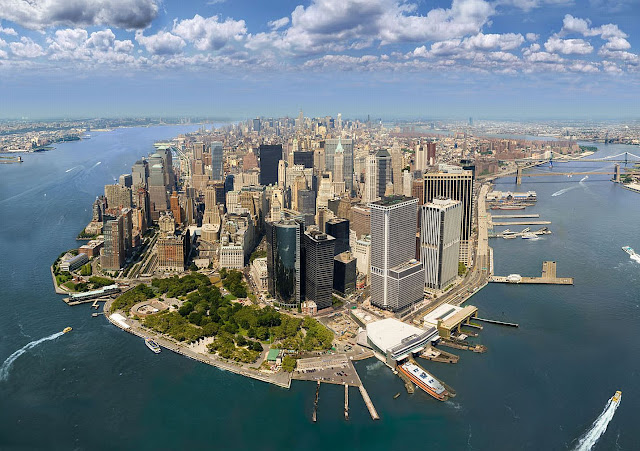While you probably won’t need to learn about the various aspects of aerial photography to benefit from its use, understanding about them could help you choose which option you want. It is always helpful to know a little information about what you want from others, to ensure that you sound knowledgeable and can help them determine the best needs for you. Technical terminology isn’t usually hard to learn, and can help make sure there aren’t any misconceptions.
Oblique (High and Low)
Any of the oblique aspects is common. The oblique version is shown while at an angle to the ground, so it is not directly overhead. If you ask for oblique, you’ll be requested to elaborate, because there are high, low, wide or close-up versions. High Oblique options include some of the horizon (skyline) while low oblique options do not.
Near Vertical
Near vertical photography means that the camera is positioned almost vertically though it’s not considered a perfect measurement. They can be used to see the general area of the land for redesigning and planning purposes. Special cameras aren’t needed, but aircraft must be adapted to get a clear shot.
True Vertical
True vertical options are exactly 90 degrees down from the centre point and usually require specialty cameras and many measurements and planning. This option gives a map-like perspective that can be scaled as a regular map.
Wide
The wide-shot is part of the oblique version and can be used to show the subject with its surroundings. This can work well if you want to get all the roadways in and around your business, to help make it easier to find you. While most wide-shots are oliques, they can also be near-verticals.
Close-Up
The close-up option is taken close so that what you want to be pictured fills the frame or fills it as much as possible. They can be used to capture more details or to create impact. If you are going to use a close-up, it works best to know ahead of time. While you can enlarge other options, the results won’t be as precise.
Panorama
A panorama typically means a very big wide shot, which includes the horizon and a larger area. They are usually created by taking up to eight single shots and then using computer software to stitch them together seamlessly. You can have a regular panorama and a 360-degree panorama view.
Understanding the different asspect of aerial photography can help you determine which one you may need.
Source: VisionAir Alternative Imaging Solutions













I dunno much about photography.. But I really enjoy looking at great photos!~
ReplyDeleteThis is very informative! My family plans on starting a business, so I like how you mentioned wide shots for business purposes. That's a good idea for something to put on a business website so that customers know exactly what to look for when visiting your place of business.
ReplyDeleteIt's good to know the basics of aerial shots because you might need photographers for a project like this in the future, either that or you can just simply learn them to increase your knowledge in photography. No matter, it would be nice to get to know the terms and the kinds of shots that you can do!
ReplyDeleteI think I still have a lot to learn when it comes to aerial photography. It does give you a really nice perspective.
ReplyDeleteDrones can be purchased now at a fraction of price they used to cost. This makes it more interesting for photographers and film enthusiasts to try using drones with cameras and shoot aerial views of buildings and landscapes.
ReplyDeleteThis is quite informative and I think taking an aerial shot is not that easy. I feel the most difficult part is to focus on your object in this mode.
ReplyDeleteThis is one hobby I've been wanting to learn. You have infused great tips/ideas for future photography buffs to learn.
ReplyDeleteYou have so many blogs on so many different topics going on. You are someone with very wide knowledge on a lot of topics.
ReplyDeleteI love photography and because of that Im planning to buy a drone to get an aerial photos on all my travels
ReplyDeleteI've taken all the types you've mentioned. Just coming to. Know of their names...
ReplyDeleteI like this post because I'm a photography enthusiast. I enjoy composing pictures from different angles and perspectives. Sometimes, the story of a photo may change just by changing position or angle.
ReplyDeleteWow! I don't really know many of these terms. This article is good read for beginners like me.
ReplyDeleteThat's interesting to gain a little insight into what these terms mean. I like knowing the basics, and getting ideas while reading about them.
ReplyDeleteI often think aerial photography is for professionals or those with drone. I just saw a news recently of a lady who fell down a cliff because she was taking a photo from the top...it's really scary and dangerous...
ReplyDeleteRecently, taking random pics has suddenly become a passion I do. Thanks for the basic terms in knowing the various photo shoots. Appreciate much!!
ReplyDelete